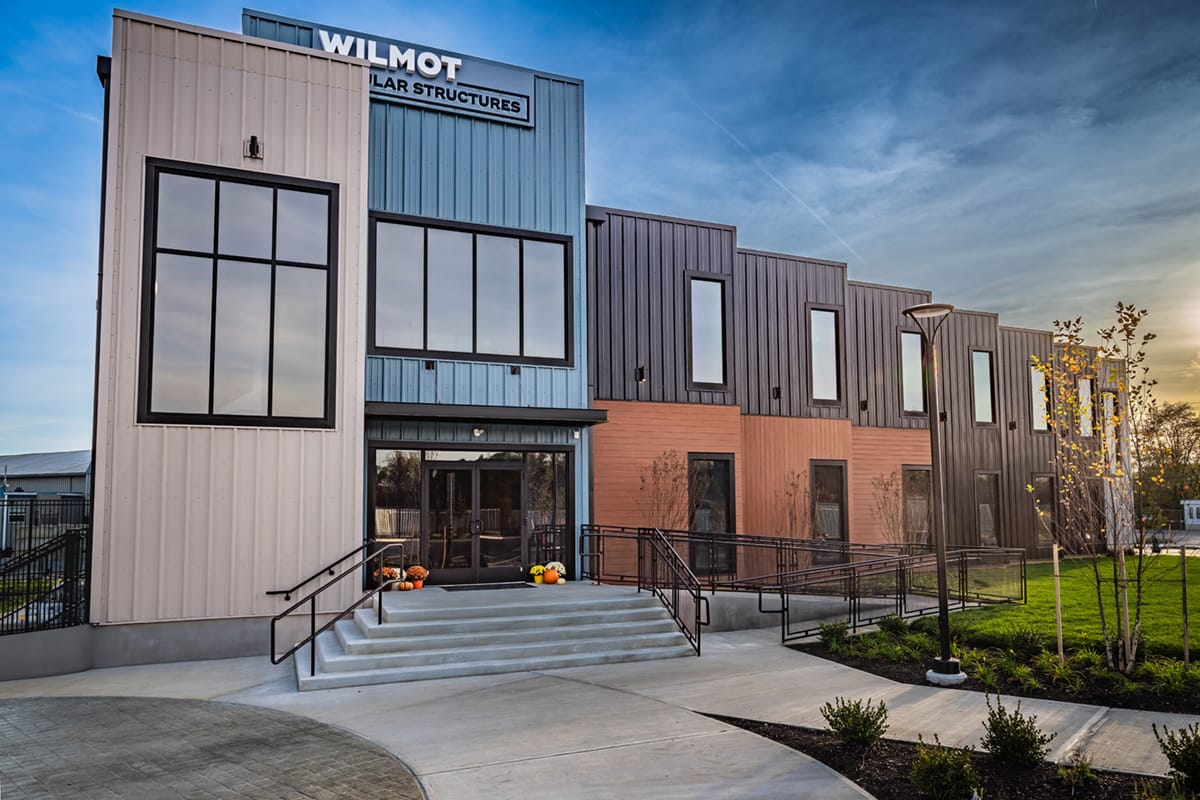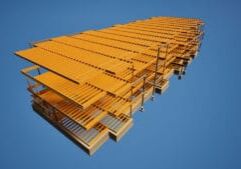Wilmot Modular Structures, Inc. Corporate Campus
Company Needs
Wilmot Modular Structures required a modern, efficient headquarters to showcase their modular construction expertise while fostering team collaboration and innovation. The facility was designed to streamline operations, reflect the company’s commitment to sustainability, and embody the values of an American family-owned business, supporting long-term growth under multigenerational leadership.
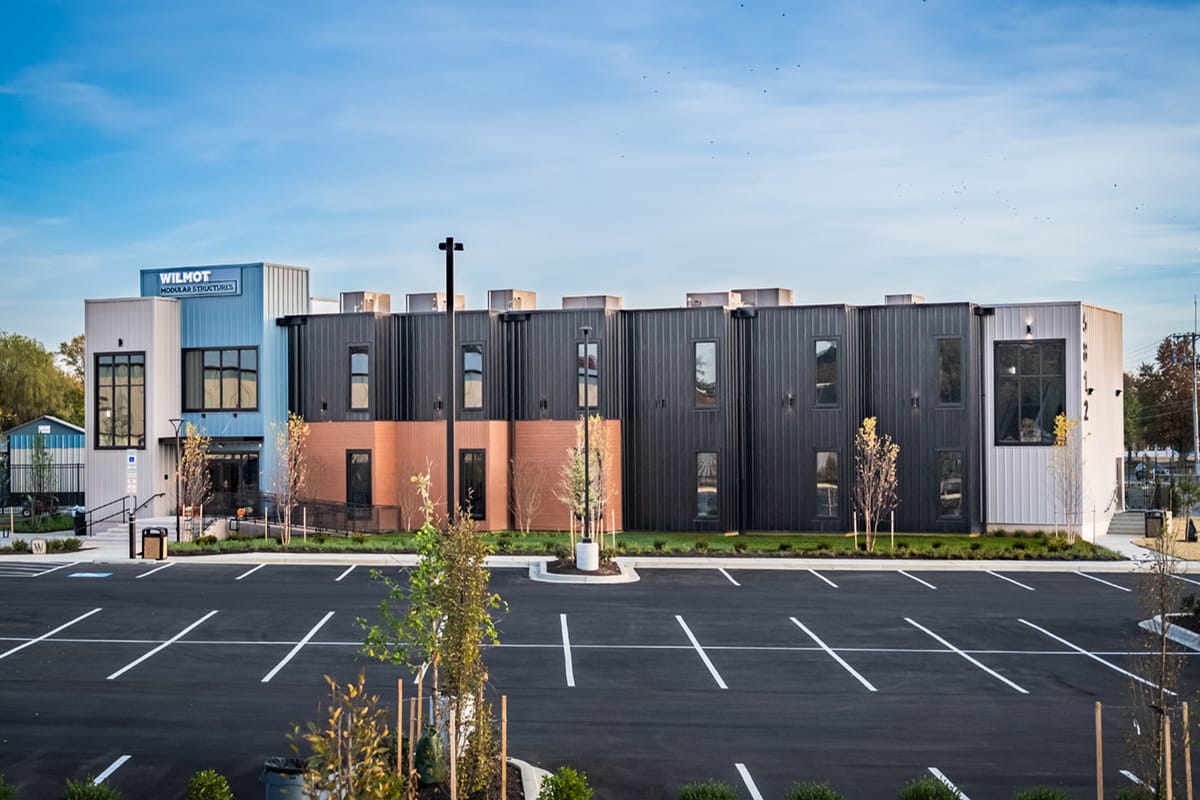
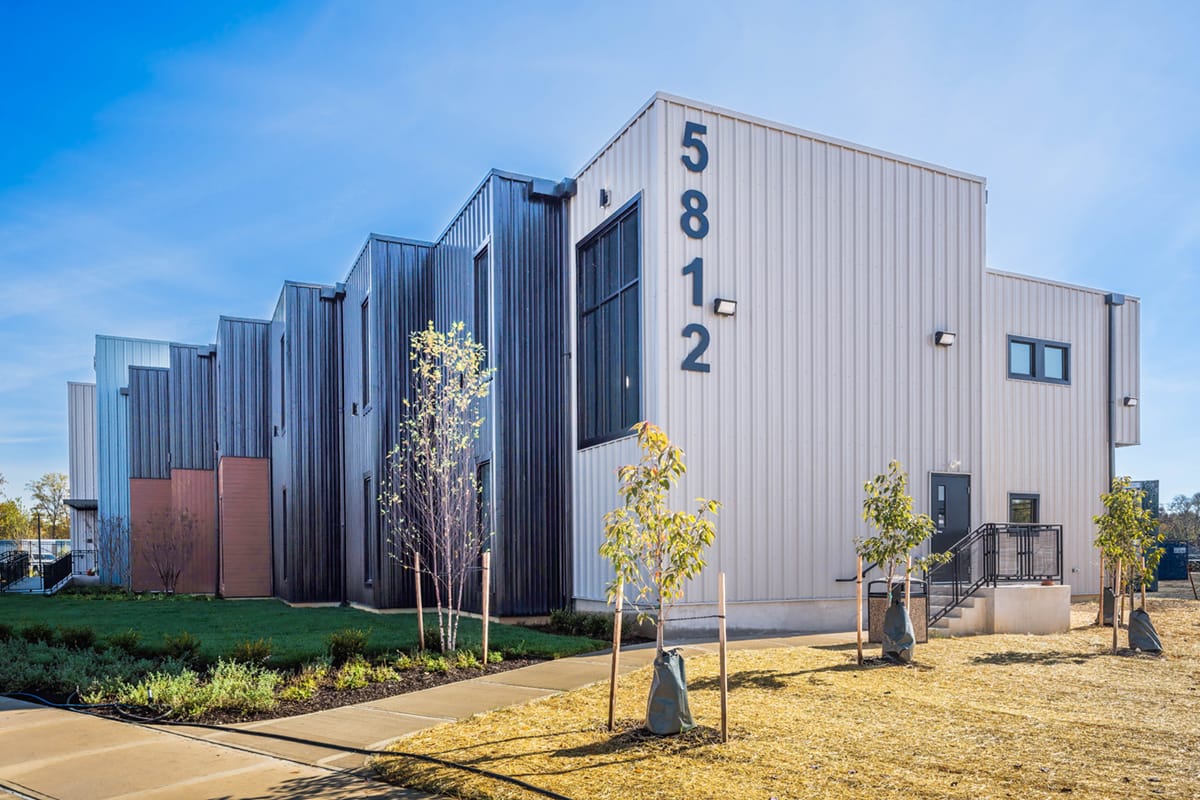
Challenges & Solutions
One of the major challenges faced during the project was achieving a balance between speed and quality. While modular construction is inherently faster than traditional methods, the precision required for such a large and complex structure demands meticulous planning and execution. The integration of modular components with traditional site-built elements, such as the stair towers, elevator and custom courtyard required careful coordination between off-site and on-site teams. Through close collaboration with partners and strict adherence to quality control measures, the project was completed on time without sacrificing Wilmot’s high standards.
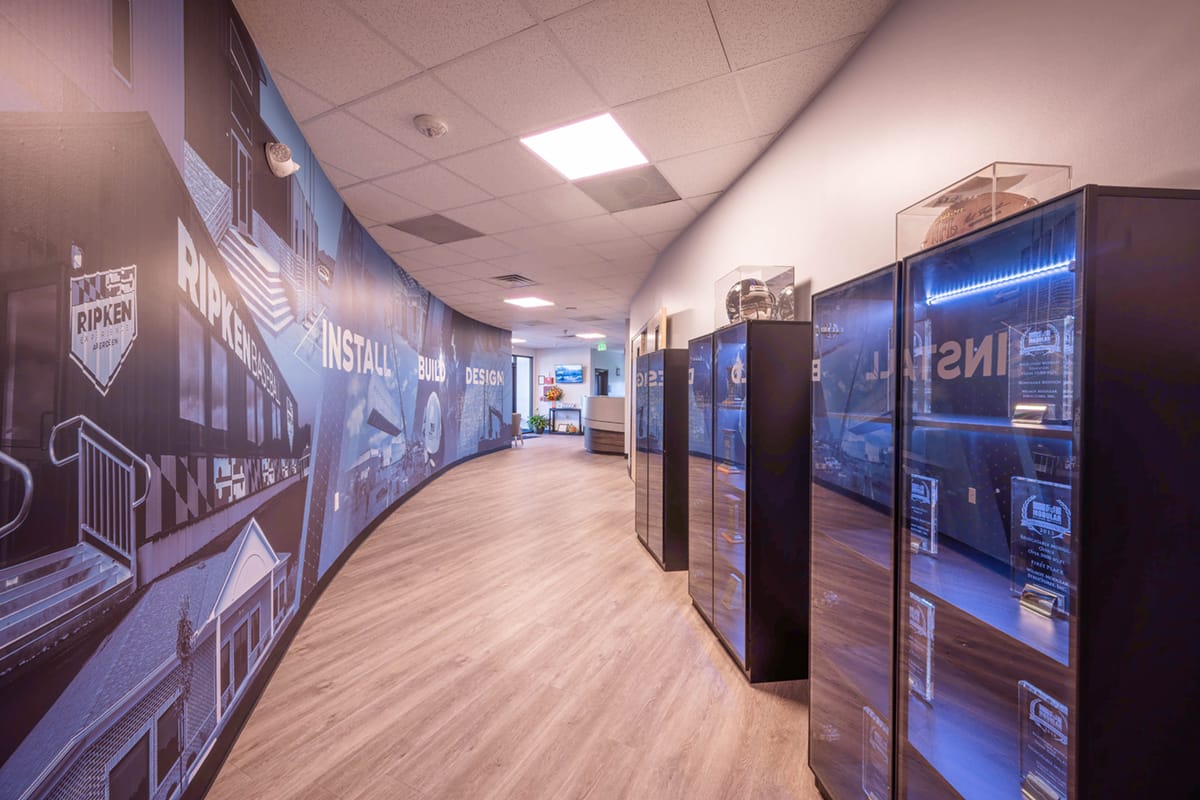
Key Features
Modular Construction
The use of prefabricated building modules allowed for rapid construction without compromising on quality. As the modules were assembled off-site, foundation work progressed on-site. Once ready, the modules were precisely positioned using cranes, cutting down the construction timeline significantly.
Sustainability
Sustainability was a central component of the headquarters design featuring low-waste construction, energy-efficient materials, and smart design strategies, such as: natural light optimization, energy-efficient lighting, and cantilevered modules.
Operations Center
18,000 sq. ft. space with four renovation bays, designed to streamline the retrofitting of modular units for customers, following the 5-S principles of lean operations. Real-time digital tracking capabilities allow for optimized project management, ensuring that all customer projects remain on schedule.
Design
A two-story atrium and glass balcony connect expansive hallways, merging form and function to reflect Wilmot’s values of openness, innovation, and flexibility. The modular elevator ensures easy access to all floors, demonstrating how modular systems can be incorporated into long-term, high-functioning structures.
American Heritage
A courtyard centered around an American flag honors the company’s family-run business and multi-generational legacy.
More from Modular Advantage
Oregon’s Prevailing Wage Proposal: A Wake-Up Call for Modular Construction
In early February, 2024, the Massachusetts Board of Building Regulations and Standards (BBRS) released its proposed 10th Edition building codes. This draft included several amendments targeting modular construction that would have created an extremely difficult environment for the entire modular industry and could have eliminated the industry entirely in the state.
Behind the Design of Bethany Senior Terraces, NYC’s First Modular Passive House Senior Housing Project
As more developers seek to meet new regulations for energy efficiency, the team at Murray Engineering has set a new record. With the Bethany Senior Terraces project, Murray Engineering has helped to develop NYC’s first modular structure that fully encompasses passive house principles — introducing a new era of energy efficiency in the energy-conscious city that never sleeps.
How LAMOD is Using Modular to Address Inefficiency, Sustainability, and the Future of Construction
As developers, designers, and contractors seek to understand the evolving needs of the modular industry, no one is as well-versed in the benefits of going modular as Mārcis Kreičmanis. As the co-founder and CBDO of LAMOD in Riga, Latvia, Mārcis has made it his ultimate goal to address the inefficiencies of traditional construction.
From Furniture Builder to ‘Activist Architect’: Stuart Emmons’ Unique Journey
Stuart Emmons was fascinated by buildings at a young age. He remembers building sand cities with his brother during trips to the Jersey shore. His father gave him his first drawing table at the age of ten. Today, he is an experienced architect who received his FAIA in June 2025. The road he took is unique, to say the least.
Forge Craft Architecture + Design: Codes, Contracts, and Intellectual Property
Founding Principal and Director of Modular Practice for Forge Craft Architecture + Design, Rommel Sulit, discusses the implications of codes, contracts, and intellectual property on
modular construction.
Eisa Lee, the “Bilingual” Architect
Now as the founder of XL
Architecture and Modular Design in Ontario, Canada, she applies not just her education as a traditional architect but an entire holistic view on modular design. It’s this expansive view that guides her work on being a true partner that bridges the gap between architects and modular factories as they collaborate on the design process.
Tamarack Grove Engineering: Designing for the Modular Sector
The role of a structural engineer is crucial to the success of a modular project, from initial analysis to construction administration. Tamarack Grove offers structural engineering services — project analysis, plan creation, design creation, and construction administration — for commercial, manufacturing, facilities, public services, and modular. Modular is only one market sector the company serves but it is an increasingly popular one.
Engineer Masters the Art of Listening to His Customers
Since founding Modular Structural Consultants, LLC. in 2014, Yurianto has established a steady following of modular and container-based construction clients, primarily manufacturers. His services often include providing engineering calculations, reviewing drawings, and engineering certification
Inside College Road: Engineering the Modules of One of the World’s Tallest Modular Buildings
College Road is a groundbreaking modular residential development in East Croydon, South London by offsite developer and contractor, Tide, its modular company Vision Volumetric (VV), and engineered by MJH Structural Engineers.
Design for Flow: The Overlooked Power of DfMA in Modular Construction
Unlocking higher throughput, lower costs, and fewer redesigns by aligning Lean production flow with design for manufacturing and assembly.

